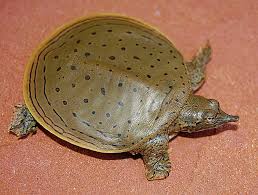StonesWild 12/21/15
First off let me thank you all for reading this- Its important my blogs get recognized properly
Article fifteen, here we go.
I, Stone, would like to welcome you all to todays wildlife discussion...
Article fifteen, here we go.
I, Stone, would like to welcome you all to todays wildlife discussion...
The Great Things About The Great Lakes
The last post of the year...wow. With over a year of posts behind us now, I would like to thank all of StonesWild's readers, whether you be a loyal follower of the blog, or simply an interested person skimming Google.
This last post I will devote to a wonderful habitat that has been very close to me my entire life- The Great Lakes. Michigan and Erie will be the main focus today. What many do not realize is that the wildlife treasures of these inland seas compare with their ocean brethren in splendor- It isn't all bass fishing and zebra mussels.

-Lake Sturgeon-
A primitive yet intriguing fish, now quite rare, the deep-dwelling Sturgeon is consequently rarely observed in the wild. Shark-like in appearance, and equally similar in it's large size, the sturgeon is, however, quite harmless. A consumer of clams and crawfish, this wonderful piscine nears over 7 feet at its greatest.


-White Pelican-
An immense, noisy bird, the pelican is normally associated with the salty seas, but is actually quite comfortable in the summer bays of Lake Erie, Michigan, and occasionally others. The saggy throat pouch, however odd looking, is quite practical in rounding up fish. A tough, rugged bird, American White Pelicans will angrily beat down hawks and even eagles that may prey upon their young ones.


-Spotted Turtle-
Small, but brightly patterned, this rare, aquatic reptile is quite brave. It often ventures onto land, from which escapades many individuals bear scars from run-ins with raccoons or similar toothy mammals! An active hunter, this turtle hunts crawfish in warm shallow water, and small fish in the open water. Browsing aquatic vegetation as well, the foraging wanders of this animals take it throughout a range of anywhere from roughly 2 to 8 acres.

-Double Crested Cormorant-
A heavy bodied, rough-looking bird, the Double Crested cormorant looks quite regal when dry, but thoroughly bedraggled after a dive. The yellow mask, fringy wings and the hooked bill make this avian an interesting character to meet. Often associating with other seabirds, cormorants hunt small fish by diving deep with their heavy, solid builds.


-Softshell Turtle-
This solid, substantial turtle can grow 18 inches long and live 53 years. They enjoy warm, sandy shallows, where small plants and fish are plentiful. The amusing tubular nose of the animal is used for breathing in shallow water, much as a scuba dive uses a snorkel.

Thank you everyone for reading! I hope you all enjoyed it.
All the Best, and have a phenomenal Christmas everyone!
Safari Stone
The last post of the year...wow. With over a year of posts behind us now, I would like to thank all of StonesWild's readers, whether you be a loyal follower of the blog, or simply an interested person skimming Google.
This last post I will devote to a wonderful habitat that has been very close to me my entire life- The Great Lakes. Michigan and Erie will be the main focus today. What many do not realize is that the wildlife treasures of these inland seas compare with their ocean brethren in splendor- It isn't all bass fishing and zebra mussels.
-Lake Sturgeon-
A primitive yet intriguing fish, now quite rare, the deep-dwelling Sturgeon is consequently rarely observed in the wild. Shark-like in appearance, and equally similar in it's large size, the sturgeon is, however, quite harmless. A consumer of clams and crawfish, this wonderful piscine nears over 7 feet at its greatest.
-White Pelican-
An immense, noisy bird, the pelican is normally associated with the salty seas, but is actually quite comfortable in the summer bays of Lake Erie, Michigan, and occasionally others. The saggy throat pouch, however odd looking, is quite practical in rounding up fish. A tough, rugged bird, American White Pelicans will angrily beat down hawks and even eagles that may prey upon their young ones.
-Spotted Turtle-
Small, but brightly patterned, this rare, aquatic reptile is quite brave. It often ventures onto land, from which escapades many individuals bear scars from run-ins with raccoons or similar toothy mammals! An active hunter, this turtle hunts crawfish in warm shallow water, and small fish in the open water. Browsing aquatic vegetation as well, the foraging wanders of this animals take it throughout a range of anywhere from roughly 2 to 8 acres.
-Double Crested Cormorant-
A heavy bodied, rough-looking bird, the Double Crested cormorant looks quite regal when dry, but thoroughly bedraggled after a dive. The yellow mask, fringy wings and the hooked bill make this avian an interesting character to meet. Often associating with other seabirds, cormorants hunt small fish by diving deep with their heavy, solid builds.
-Softshell Turtle-
This solid, substantial turtle can grow 18 inches long and live 53 years. They enjoy warm, sandy shallows, where small plants and fish are plentiful. The amusing tubular nose of the animal is used for breathing in shallow water, much as a scuba dive uses a snorkel.
Thank you everyone for reading! I hope you all enjoyed it.
All the Best, and have a phenomenal Christmas everyone!
Safari Stone
No comments:
Post a Comment